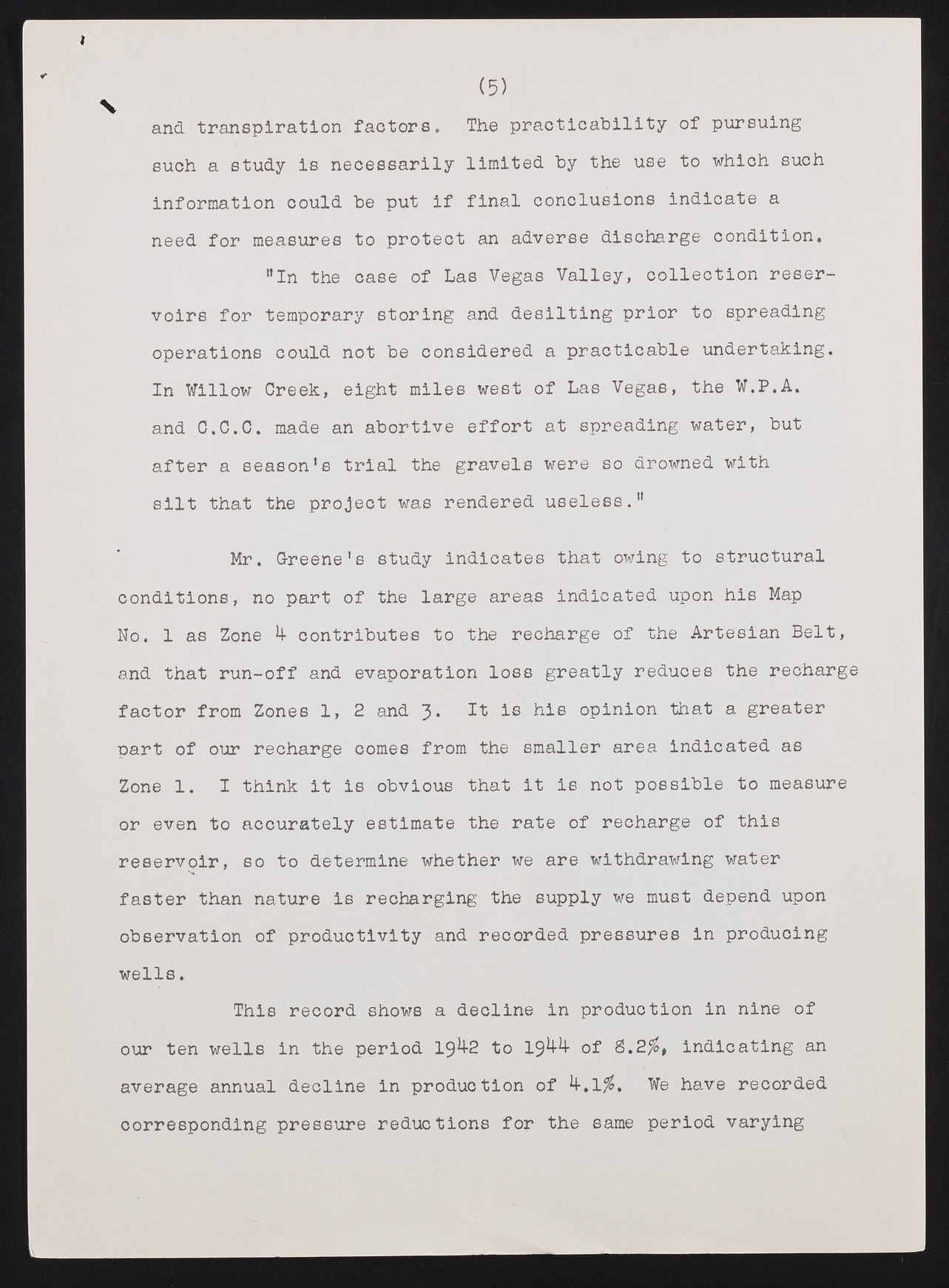Copyright & Fair-use Agreement
UNLV Special Collections provides copies of materials to facilitate private study, scholarship, or research. Material not in the public domain may be used according to fair use of copyrighted materials as defined by copyright law. Please cite us.
Please note that UNLV may not own the copyright to these materials and cannot provide permission to publish or distribute materials when UNLV is not the copyright holder. The user is solely responsible for determining the copyright status of materials and obtaining permission to use material from the copyright holder and for determining whether any permissions relating to any other rights are necessary for the intended use, and for obtaining all required permissions beyond that allowed by fair use.
Read more about our reproduction and use policy.
I agree.Information
Digital ID
Permalink
Details
More Info
Rights
Digital Provenance
Publisher
Transcription
and transpiration factors. The practicability of pursuing such a study is necessarily limited by the use to which such information could be put if final conclusions indicate a need for measures to protect an adverse discharge condition. ”In the case of Las Vegas Valley, collection reservoirs for temporary storing and desilting prior to spreading operations could not be considered a practicable undertaking. In Willow Creek, eight miles west of Las Vegas, the W.P.A. and C.C.C. made an abortive effort at spreading water, but after a season’s trial the gravels were so drowned with silt that the project was rendered useless." Mr. Greene's study indicates that owing to structural conditions, no part of the large areas indicated upon his Map No. 1 as Zone contributes to the recharge of the Artesian Belt, and that run-off and evaporation loss greatly reduces the recharge factor from Zones 1, 2 and J>. It is hie opinion that a greater part of our recharge comes from the smaller area indicated as Zone 1. I think it is obvious that it is not possible to measure or even to accurately estimate the rate of recharge of this reservoir, so to determine whether we are withdrawing water faster than nature is recharging the supply we must depend upon observation of productivity and recorded pressures in producing wells. This record shows a decline in production in nine of our ten wells in the period 19*4-2 to 19U-H- of $.2$, indicating an average annual decline in production of *+. 1%, We have recorded corresponding pressure reductions for the same period varying (5) V

